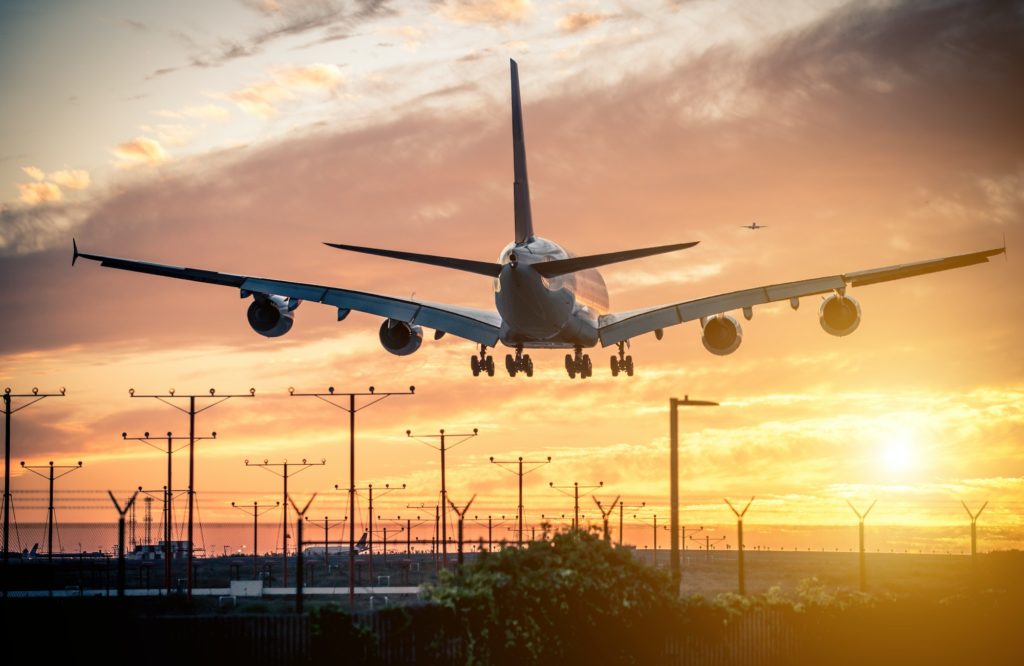Emirates Airlines—a subsidiary of The Emirates Group—has successfully tested its first demo flight in which one of the Boeing 777-300ER’s two engines was powered by 100% drop-in sustainable aviation fuel, or SAF.
The aim was to examine the safety and reliability of the synthetically derived SAF when used as a jet fuel at a higher percentage.
Piloted by Captain Khalid Nasser Akram and Captain Fali Vajifdar, this was the first-ever demo flight in the MENA region that was supplied with 100% sustainable fuel.
Currently, SAF can be mixed at up to 50% with traditional jet fuel for flying aircraft.
The flight departed from Dubai International Airport at around 11:39 pm on January 30 and was flown for more than one hour over Dubai’s coastline.
The test was part of the Emirate’s effort to help hit the Net Zero target by 2050, as the aviation industry is casting about for cleaner fuel solutions like SAF, reported GLOBETRENDER™.
SAF Can Curb Carbon Emission
SAF—a biofuel derived from renewable biomass and waste products—holds the potential to deliver the efficiency of petroleum-based conventional aircraft fuel but with only a fraction of its carbon footprint.
Case in point: Based on the method and feedstock used for production, SAF can curb greenhouse gas (GHG) emissions by up to 80% over the fuel lifecycle, offering the aviation industry solid footing for significantly decoupling GHG emissions from flights.
Since 2011, over 4,50,000 commercial flights have been taken to the skies using SAF globally.
Even though SAF has capabilities to significantly limit carbon emissions in aviation, global SAF production accounts for only 0.03% of total fuel use (based on pre-pandemic reports).
World leaders are working relentlessly to devise thought-out strategies for scaling up new processes and facilitating the production of commercially usable SAF.
As a result, the production of drop-in SAF has more than tripled in 2022, compared to 2021, according to IATA.
To date, the approved bio-jet fuel production routes include co-processing, hydro-processed esters and fatty acids (HEFA), hydro-deoxygenated synthetic aromatic kerosene (HDO-SAK), Fischer-Tropsch synthetic paraffinic kerosene (FT-SPK), and more.
However, with the increasing bio-content in aviation fuels exacerbating microbial contamination, controlling its effects has become a major concern.
That said, leveraging kits like FUELSTAT® for periodic testing of SAF and blended SAF is critical. Thus contamination can be detected at the earliest stages and before severe safety/operational disruptions occur.
More Insights into Emirates Flight Using Biofuel
Emirates partnered with Boeing, GE Aerospace, Neste, Honeywell, and Virent to produce and buy a SAF blend closely identical to the efficacy and properties of traditional aircraft fuel.
“At each blend ratio, various chemical and physical fuel property measurements were carried out,” explained an Emirates spokesperson. “After multiple lab tests and rigorous trials, [we] arrived at a blending ratio that mirrored the qualities of jet fuel.“
A total of 18T of drop-in SAF blend, made up of 50% HDO-SAK and 50% HEFA-SPK, was used for the test flight. This 100% SAF powered one General Electric GE90 engine of the aircraft, whereas; the other GE90 was supplied with petroleum-based jet fuel.
Emirates hopes the data and success of the flight will act as a step-change in facilitating the future adoption and acceptance of 100% SAF blend as a cleaner alternative to conventional fuel—well over the present limit of 50% drop-in SAF blend.
“This flight is a milestone moment for Emirates and a positive step for our industry as we work collectively to address one of our biggest challenges – reducing our carbon footprint. It has been a long journey to finally see this demonstration 100% SAF flight take off,” said Adel Al Redha, chief operating officer at Emirates Airlines.
Al Redha goes on to explain, “Such initiatives are critical contributors to industry knowledge on SAF and provide data to demonstrate the use of higher blends of SAF for future regulatory approvals. We hope that landmark demonstration flights like this one will help open the door to scale up the SAF supply chain and make it more available and accessible across geographies, and most importantly, affordable for broader industry adoption in the future.”
